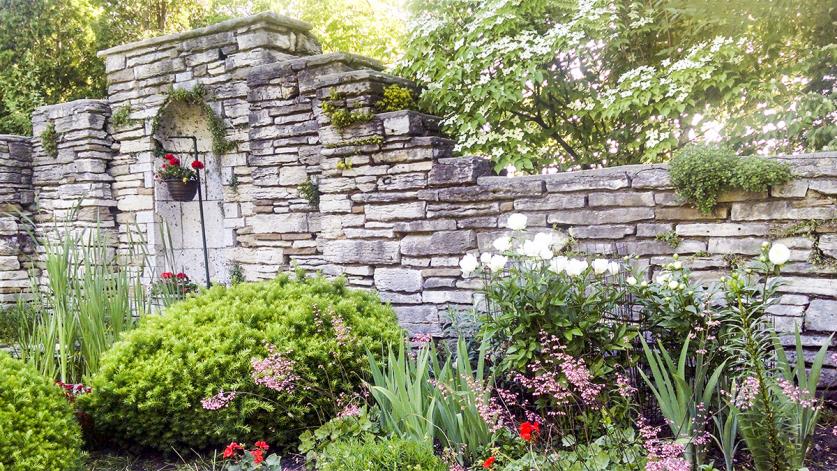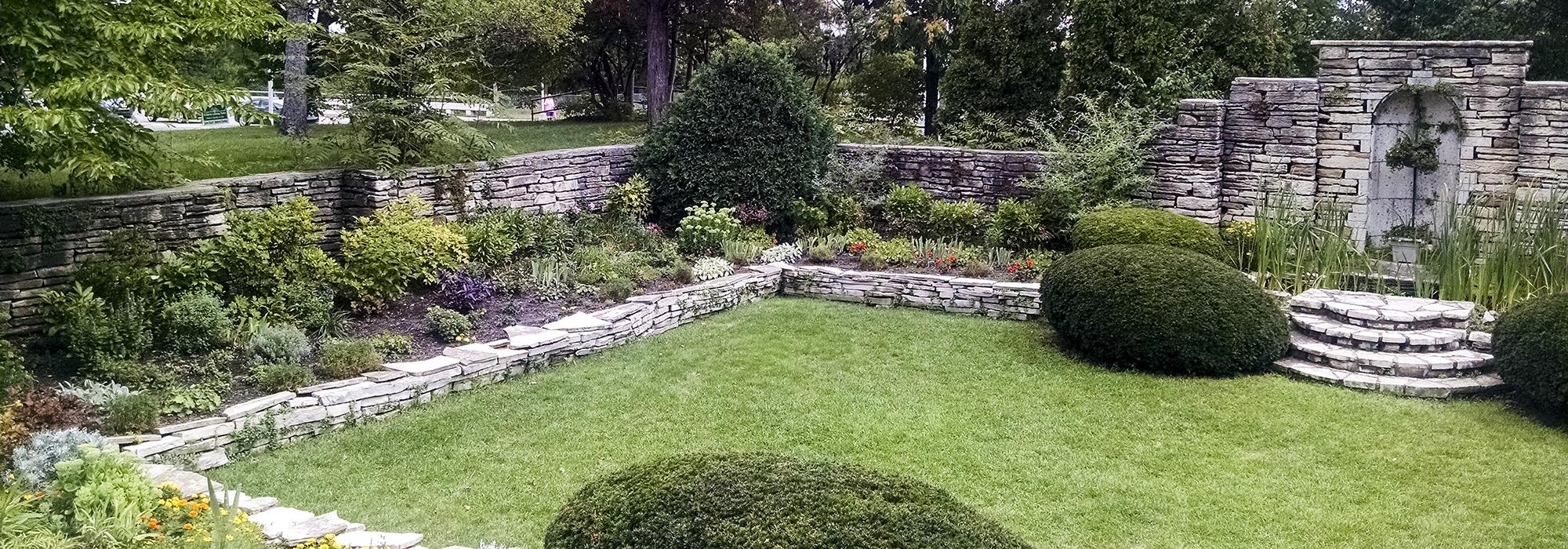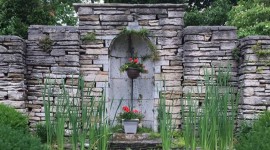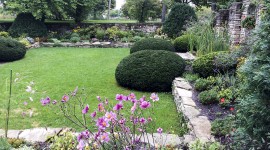The Scott Sunken Garden Faces Relocation
A local coalition of citizens and advocacy groups is scrambling to save the Scott Park Sunken Garden in Lansing, Michigan. A remnant of a bygone era, the garden is a beloved local landmark that still attracts visitors to its peaceful planting beds and sunken grotto. But a plan by the Lansing Board of Water and Light would remove the garden from its historical foundations for the sake of a power substation that would be better placed elsewhere.
History
Located in Scott Park on the bank of the Grand River just outside of downtown Lansing, Michigan, the Scott Park Sunken Garden was designed circa 1930 by philanthropist Richard H. Scott, president of the REO Motor Car Company and an avid horticulturist. To build the garden, Scott hired Nicolaas Isaac Willem Kriek (1895-1978), a Dutch immigrant who founded the Cottage Gardens Nursery in Lansing in 1923. Kriek built the garden on the foundation—literally—of the home of Michigan Supreme Court Justice Edward Cahill, which occupied a parcel adjacent to Scott’s Georgian Colonial mansion, and which Scott purchased and razed. After Scott’s own home was demolished in 1965, the garden gradually fell into disrepair. The site became a city park in the late 1970s, and in the early 1980s the Garden Club of Greater Lansing partnered with the city to restore and rehabilitate the garden, which had much deteriorated, to its original design, and continues to maintain it to this day.
Rectangular in shape, the two-tiered sunken garden measures approximately 50 x 80 feet, with a central lawn some 30 x 45 feet. The lawn is enclosed within a low limestone wall and raised flower beds in which bulbs, annuals, perennials, and shrubs are planted. The garden is accessed by curved limestone steps to the west, and by low, sloping ground to the south. On the east side of the garden is a small limestone grotto with a still-water pond featuring goldfish, cattails, and water lilies. A formal garden designed for an urban residence, the Scott Sunken Garden is among the last remnants of the row of turn-of-the-century mansions that once stood along West Main Street (now West Malcolm X Street) and that was demolished to make way for Interstate 496. Today, the property provides a cultural and historical context for the lone remaining mansion, the Cooley-Haze House, along that stretch of road. The garden also possesses historic significance for its association with prominent Lansing citizen Richard H. Scott, who donated several parcels of land to the city, including Scott Woods Park.
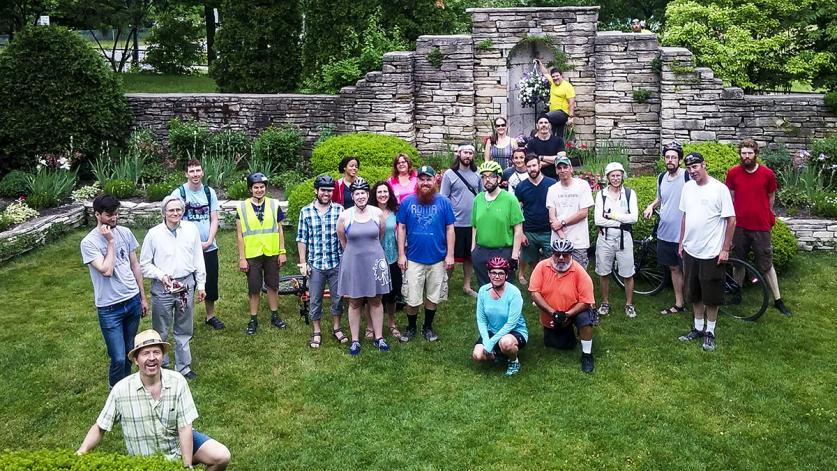
Threat
On February 9, 2016, the Lansing Board of Water and Light (BWL) announced that it would build a new $26 million central substation on a four-acre parcel of land that includes the current site of Scott Park Sunken Garden. Their plan was to "relocate and upgrade" the historic garden to a new location just west of its existing site, "enhancing recreational opportunities" by adding viewing and fishing platforms and other amenities. According to the plan, the current garden would be replaced with 20- to 40-foot-high "decorative wall panels" surrounding a 50-foot-tall substation. Despite reviewing seven alternative sites, on April 13, 2016, the BWL declared that the Scott Garden was "the only viable location" for the new substation. In April of 2016, the Lansing Parks Board voted to approve the proposal, despite the City of Lansing's most recent master plan, which calls for capitalizing on the city’s inventory of existing parks, including the Scott Park Sunken Garden. A minority of the board vehemently opposed the proposal. In June 2016, the Lansing Planning Board also voted to approve the proposal.
In an April 2016 letter, Mr. Robert O. Christensen, the National Register coordinator with the Michigan State Historic Preservation Office, informed the Lansing City Council that the garden is historically significant and is likely eligible for listing on the National Register of Historic Places under Criteria B and C, so long as it remains in its original location. At a meeting of the Lansing City Council on Monday, August 22nd, a coalition of park advocates asked the council to appoint an indepenedent committee to review the plans and costs of the proposed substation. As was reported by City Pulse, some fifteen different cost estimates for a substation at Scott Park and other locations have been put forward by the BWL since February. It is anticipated that the council will vote on whether or not to grant a special land use permit for the new substation in late August.
How You Can Help
Contact the members of the Lansing City Council and tell them to deny the Board of Water and Light a special land use permit to build a substation on the site of the Scott Park Sunken Garden. If the special use permit is not granted, the Board of Water and Light will be required to find a different site for the substation. Other sites for a substation are both available and viable, and a public outcry against the demolition or "relocation" of the historically significant garden will encourage the city government and the utility company to pursue an alternate site.
Members of the Lansing City Council:
Judi Brown Clarke, (517)-483-4180; At-Large Council Member
Term Expires: December 31, 2017
Kathie Dunbar, (517)-483-4171; At-Large Council Member
Term Expires: December 31, 2017
Tina Houghton, (517)-483-4184; 2nd Ward Council Member
Term Expires: December 31, 2017
Adam Hussain, (517)-483-4191; 3rd Ward Council Member
Term Expires: December 31, 2019
Patricia Spitzley, (517)-483-4170; At-Large Council Member
Term expires December 31, 2019
Jody Washington, (517)-393-2799; 1st Ward Council Member
Term Expires: December 31, 2019
Carol Wood, (517)-483-4188; At Large Council Member
Term Expires: December 31, 2019
Jessica Yorko, (517)-483-4180; 4th Ward Council Member
Term Expires: December 31, 2017
If you would prefer to advocate for an alternate location for the substation, please contact Dale Schrader at Preservation Lansing. The organization is actively pursuing alternative sites and has launched petitions and letter-writing campaigns. They will be happy to add your voice to the chorus.
Dale Schrader
Vice President, Preservation Lansing
schraderenviro@comcast.net , or
